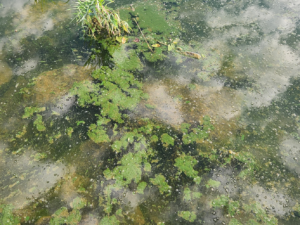Harmful Algal Bloom
Reports of HABs in Nevada
With warmer weather and abundance of water, we may be seeing an increase of possible Harmful Algal Blooms (HABs). Harmful algae can produce toxins that hurt people, animals, and the environment. There have been nine reports of active HABs in 2025 (see below for more information).
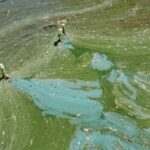
2025
Active HAB Reports
Rye Patch Reservoir
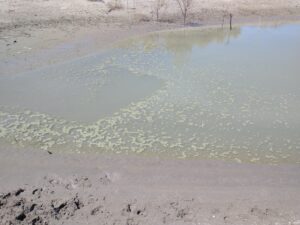
Rye Patch Reservoir has been placed on a HAB Watch Advisory after visual observations of algae having the appearance of surface cyanobacteria.
Hazardous conditions are possible or present. People and pets should use caution when in contact with water and avoid areas of algae accumulation.
Lake Mohave
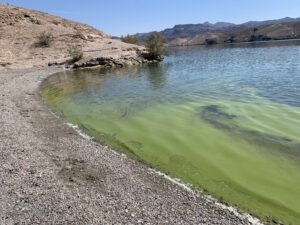
Lake Mohave has been placed on a HAB Watch Advisory after visual observations of algae having the appearance of surface cyanobacteria.
Hazardous conditions are possible or present. People and pets should use caution when in contact with water and avoid areas of algae accumulation.
South Meadows Community Pond
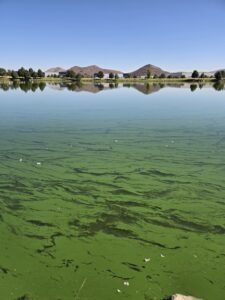
A suspect HAB has been observed at the South Meadows Community Pond in Reno.
Hazardous conditions are possible or present. People and pets should use caution when in contact with water and avoid areas of algae accumulation.
Baily Pond
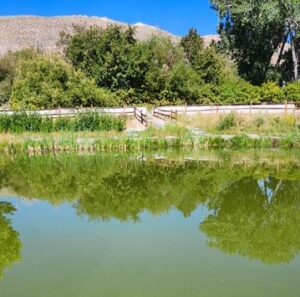
A suspect HAB has been observed at Baily Pond in Reno.
Hazardous conditions are possible or present. People and pets should use caution when in contact with water and avoid areas of algae accumulation.
Chimney Reservoir
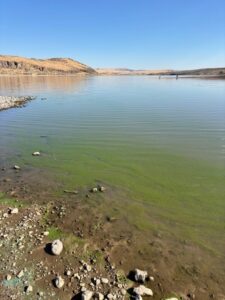
Chimney Reservoir has been placed on a HAB Watch Advisory after visual observations of algae having the appearance of surface cyanobacteria.
Hazardous conditions are possible or present. People and pets should use caution when in contact with water and avoid areas of algae accumulation.
Washoe Lake (Big)
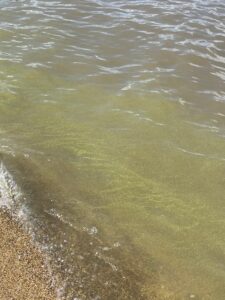
Washoe Lake (Big) has been placed on a HAB Watch Advisory after visual observations of algae having the appearance of surface cyanobacteria.
Hazardous conditions are possible or present. People and pets should use caution when in contact with water and avoid areas of algae accumulation.
Lahontan Reservoir
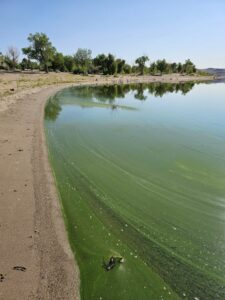
Lahontan Reservoir’s previous HAB Watch Advisory has been increased to a HAB Warning Advisory. Satellite data indicates very high concentrations of cyanobacteria on the water surface. The condition of the water body is expected to be unsafe for human and animal exposure. Human or animal contact with visible blooms is discouraged.
Eagle Valley Reservoir
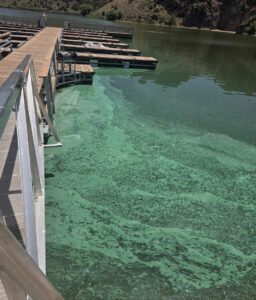
Eagle Valley Reservoir has been placed on a HAB Watch Advisory after visual observations of algae having the appearance of surface cyanobacteria.
Hazardous conditions are possible or present. People and pets should use caution when in contact with water and avoid areas of algae accumulation.
Tips and Information about HABs
Signs that there may be an HAB in the water:
- The water smells rotten
- The water looks like paint
- Large mats or scums are floating on surface
- There are bright colors like blue, green, white, brown or red
The Nevada Division of Public and Behavioral Health (DPBH) is working with Nevada Division of Environmental Protection, Nevada State Parks and the Nevada Department of Wildlife to ensure the health and safety of Nevadans and their pets who may visit locations where a Harmful Algal Bloom (HAB) has occurred.
If a HAB is suspected, individuals should take the following precautions:
- Do not allow pets to play in or drink water during a bloom
- Do not swim or play in water with a bloom
- Do not drink, cook with or wash dishes with affected water
People exposed through direct skin contact, ingestion or inhalation may experience irritation of the skin, eyes, nose, throat, and/or respiratory tract. Symptoms to look for include:
- Rashes, hives, or blisters
- Runny nose, sore throat, asthma, or allergic-like reactions
People exposed through ingesting cyanotoxins may experience:
- Abdominal pain
- Headache
- Neurological symptoms
- Vomiting
- Diarrhea
- Liver damage and/or kidney damage
For more information and tips about HABs visit Environmental Health | The Office of State Epidemiology. Individuals who believe they may be experiencing symptoms of exposure to algal toxins should contact their local health care provider or contact the Poison Control Center: 1-800-222-1222.
Dashboard
To keep current with advisory recommendations, click here to access our dashboard
Previous HAB Reports
2025
Echo Canyon Reservoir
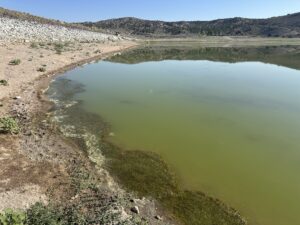
2024
There were sixteen reports of HABs the summer/fall of 2024.
Virginia Lake
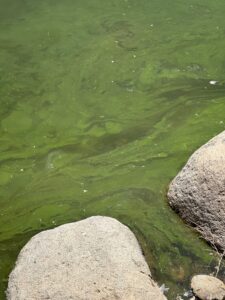
Eagle Valley Reservoir
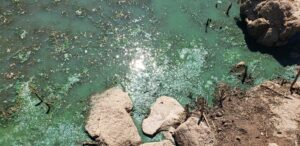
Wild Horse Reservoir
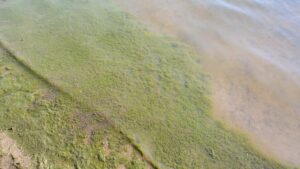
South Fork Reservoir
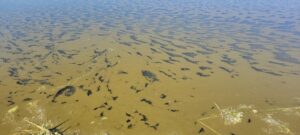
Big and Little Washoe Lakes
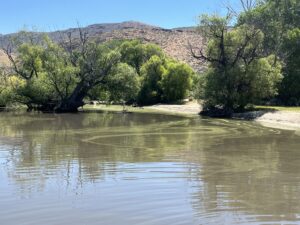
Weber Reservoir
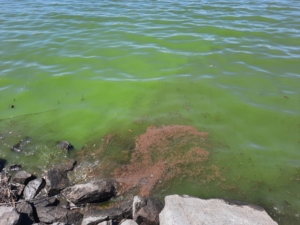
Stillwater National Wildlife Refuge

Lahontan Reservoir
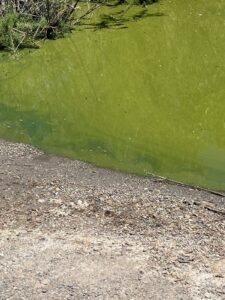
Lake Mohave – Eagle Wash Cove, Placer Cove, and Morning Star Cove
Chimney Reservoir
Nevada Beach Pond
Sheep Creek Reservoir
Lake Mohave – Eagle Wash Cove, Placer Cove, and Morning Star Cove
2023
There were four reports of HABs the summer of 2023.
Washoe Lake
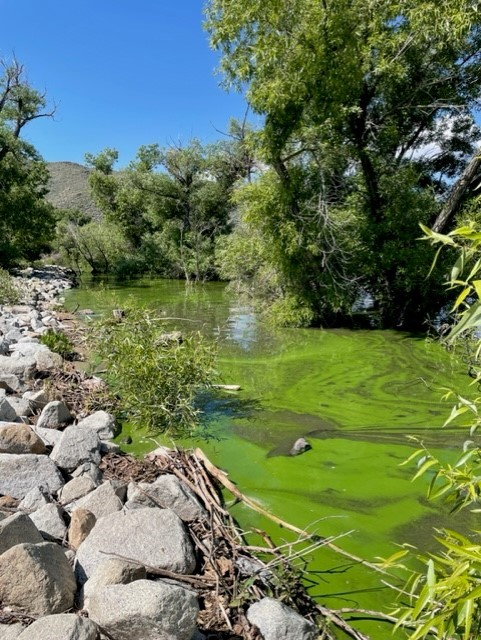
Lahontan Reservoir
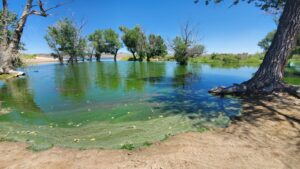
Wild Horse Reservoir
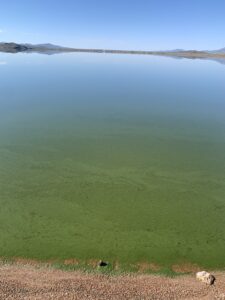
South Fork Reservoir
